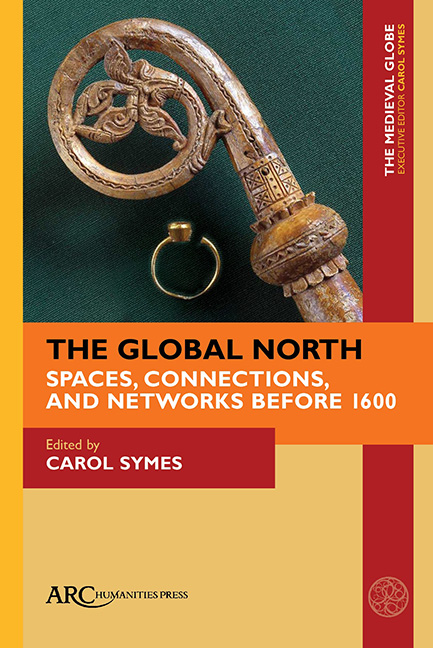Book contents
- Frontmatter
- Contents
- List Of Illustrations
- Introduction: Exploring the Global North, from the Iron Age to the Age of Sail
- Contesting Marginality: The Boreal Forest of Middle Scandinavia and the Worlds Outside
- Archaeological Evidence for Staraya Lagoda as an Early Scandinavian Emporium of the Global North
- Gunhild’s Cross and the North Atlantic Trade Sphere
- The Far North in the Eyes of Adam of Bremen and the Anonymous Author of the Historia Norwegie
- The Multi-Layered Spatiality of the Global North: Spatial References and Spatial Constructions in Medieval East Norse Literature
- Military Migration in the Baltic Sea Region, ca. 1400–1620
- Old and New Land in the North and West: The North Atlantic on the Medieval Globe around 1500
- Index
Archaeological Evidence for Staraya Lagoda as an Early Scandinavian Emporium of the Global North
Published online by Cambridge University Press: 20 January 2022
- Frontmatter
- Contents
- List Of Illustrations
- Introduction: Exploring the Global North, from the Iron Age to the Age of Sail
- Contesting Marginality: The Boreal Forest of Middle Scandinavia and the Worlds Outside
- Archaeological Evidence for Staraya Lagoda as an Early Scandinavian Emporium of the Global North
- Gunhild’s Cross and the North Atlantic Trade Sphere
- The Far North in the Eyes of Adam of Bremen and the Anonymous Author of the Historia Norwegie
- The Multi-Layered Spatiality of the Global North: Spatial References and Spatial Constructions in Medieval East Norse Literature
- Military Migration in the Baltic Sea Region, ca. 1400–1620
- Old and New Land in the North and West: The North Atlantic on the Medieval Globe around 1500
- Index
Summary
ONE OF NORTHEASTERN Europe's major medieval historical and archaeological sites is the trading port of Staraya Ladoga, “Old” Ladoga, located on the western bank of the Volkhov River and twelve kilometres from the southern shore of Lake Ladoga in what is now Russia. This settlement remained attractive for Scandinavian traders, craftsmen, and farmers throughout the Viking Age (eighth to eleventh centuries) and probably beyond, because ships could sail from the Baltic Sea through the Gulf of Finland and into Lake Lagoda, seventy-four kilometres inland, via the Neva River. From there, they could proceed to the mouth of the Volkhov, some hundred kilometres along the southern shore of the lake.
Ladoga is mentioned several times in the Primary Chronicle of Rus’ (compiled in the early twelfth century) and in Icelandic sagas, where it is known as Aldejgjuborg. In the early eleventh century, the Prince of Kiev, Yaroslav the Wise (Mudry), ceded any regional claim on Ladoga to his wife, Princess Ingegerd Olofsdotter of Sweden, creating a separate jarlsriki or earldom. After she died, in 1050, Ladoga became part of Novgorod territory at some point; however, this phase of its history is difficult to verify through archaeological evidence alone. In the occupation layers above wooden buildings from the mid-tenth century, glass bracelets and lead seals that are characteristic of the Early Rus’ period (twelfth to thirteenth centuries) have been discovered. Meanwhile, the Chronicle of Novgorod records that, in 1105, the Novgorodians, led by Prince Mstislav Vladimirovich “made war against Ladoga.” What, then, was the geopolitical status of Ladoga during the fifty years after Ingegerd's death?
In this article, I will argue that these finds, coupled with the chronicle's claim, should be interpreted as evidence for the end of the Ladoga jarlskiri and its autonomy, as do the finds of lead seals from Novgorod and the building of a new and larger stone fortress. Prior to that time, and perhaps even under Novogorod influence, Staraya Ladoga functioned as an important emporium of the global North.
According to dendrochronological data, the first wooden living structures at Ladoga are dated no later than 753 CE. The focal area of the settlement was situated on the lower part of the riverbank, hidden from the Volkhov by a coastal dune.
- Type
- Chapter
- Information
- The Global NorthSpaces, Connections, and Networks before 1600, pp. 37 - 52Publisher: Amsterdam University PressPrint publication year: 2021

